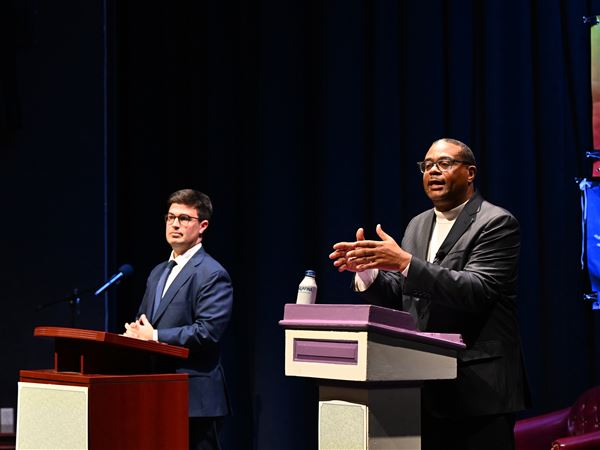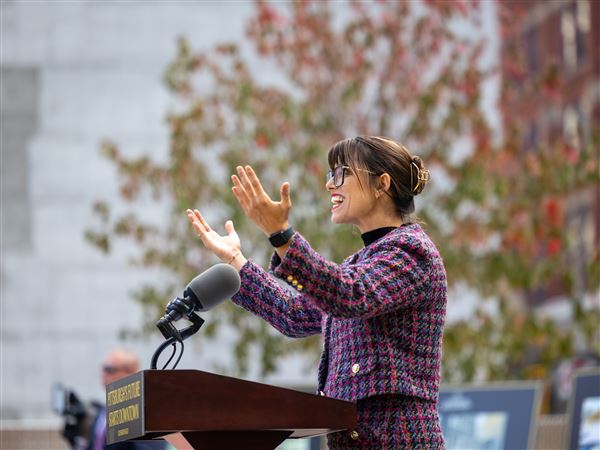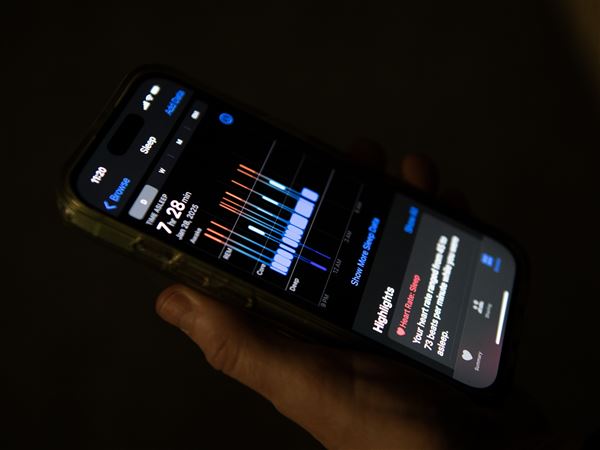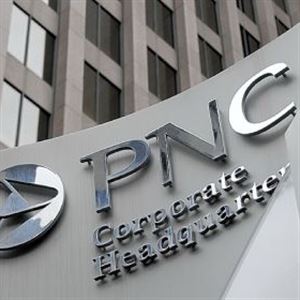Pedestrians tend to have a certain mindset about threats to their safety.
“What I hear all the time is, it’s the driver; it’s the driver; it’s the driver,” Mt. Lebanon Commissioner Coleen Vuono said.
What she and others learned during the commission’s discussion session Monday was that people who walk put themselves in peril more often than they think.
The meeting — held specifically to address developing a safer environment for vehicles, pedestrians and bicyclists — wrapped up with commissioners calling for an awareness campaign aimed at deterring jaywalking, distracted walking and similarly risky behavior.
Giving presentations to commissioners were six speakers providing information on various facets of the safety issue:
• Lt. Duane Fisher, senior reconstruction specialist for the traffic division of Mt. Lebanon police, said that in accidents involving people who are walking, 60 to 65 percent are the fault of pedestrians. He cited among other reasons their failure to cross streets at intersections and crosswalks, follow traffic control signals and generally pay attention while walking.
“We have to modify the paradigm that it’s just the driver’s responsibility,” he said.
Mr. Fisher noted that among the region’s motorists, Mt. Lebanon is known for its aggressive enforcement of traffic laws.
“We want that detriment effect, so that people are afraid to drive in an unsafe or impaired manner here,” he told commissioners.
• John Stinner, who is a management analyst for the municipality, also pointed to a tendency for local residents “to disregard jaywalking and crossing laws,” which perhaps is related to a lack of relevant signage.
“There’s nothing talking about what could happen if you jaywalk, which obviously is an area of concern for the community,” he said.
Mr. Stinner also described pedestrian awareness programs in other communities, such as the international Vision Zero project and the Walk Smart initiatives in Ocean City, Md., elements of which could be adapted in Mt. Lebanon.
“You could strike out and try to educate people that this is a problem,” he said. “Trying to at least get them to take a moment to pause would probably help a great deal.”
• Thomas Klevan, manager of multimodal transportation planning for the Southwestern Pennsylvania Commission, told commissioners about possible funding sources for improvements toward a safer walking and bicycling environment.
He agreed with Mr. Stinner in recommending that the municipality enhance its efforts to compile information on pedestrian-related accidents and related issues.
“Then you have the data,” he said. “You can present it. You can say, this is why this is a good project.”
• Eric Boer, advocacy director of Bike Pittsburgh, gave a presentation about the city’s efforts to encourage safe cycling and how Mt. Lebanon could work toward a similar concept. He suggested the municipality adopt a “complete streets policy” that in part addresses what can be done for bicycles.
• Michael Haberman, traffic engineer for Gateway Engineers, discussed traffic-calming, volume-reduction measures the municipality potentially could take to help promote safety.
• Philip Mutunga, traffic engineer for Pennsylvania Department of Transportation District 11, talked about steps the agency has taken to accommodate pedestrians in Mt. Lebanon, including signal placement, crosswalks and signage.
Monday’s discussion session was the second of three such meetings scheduled to address topics that the commissioners have determined to be priorities. A session in June focused on deer management, and an Aug. 8 meeting will cover long-term financial planning and community engagement.
Harry Funk, freelance writer: suburbanliving@post-gazette.com
First Published: July 31, 2015, 4:00 a.m.














